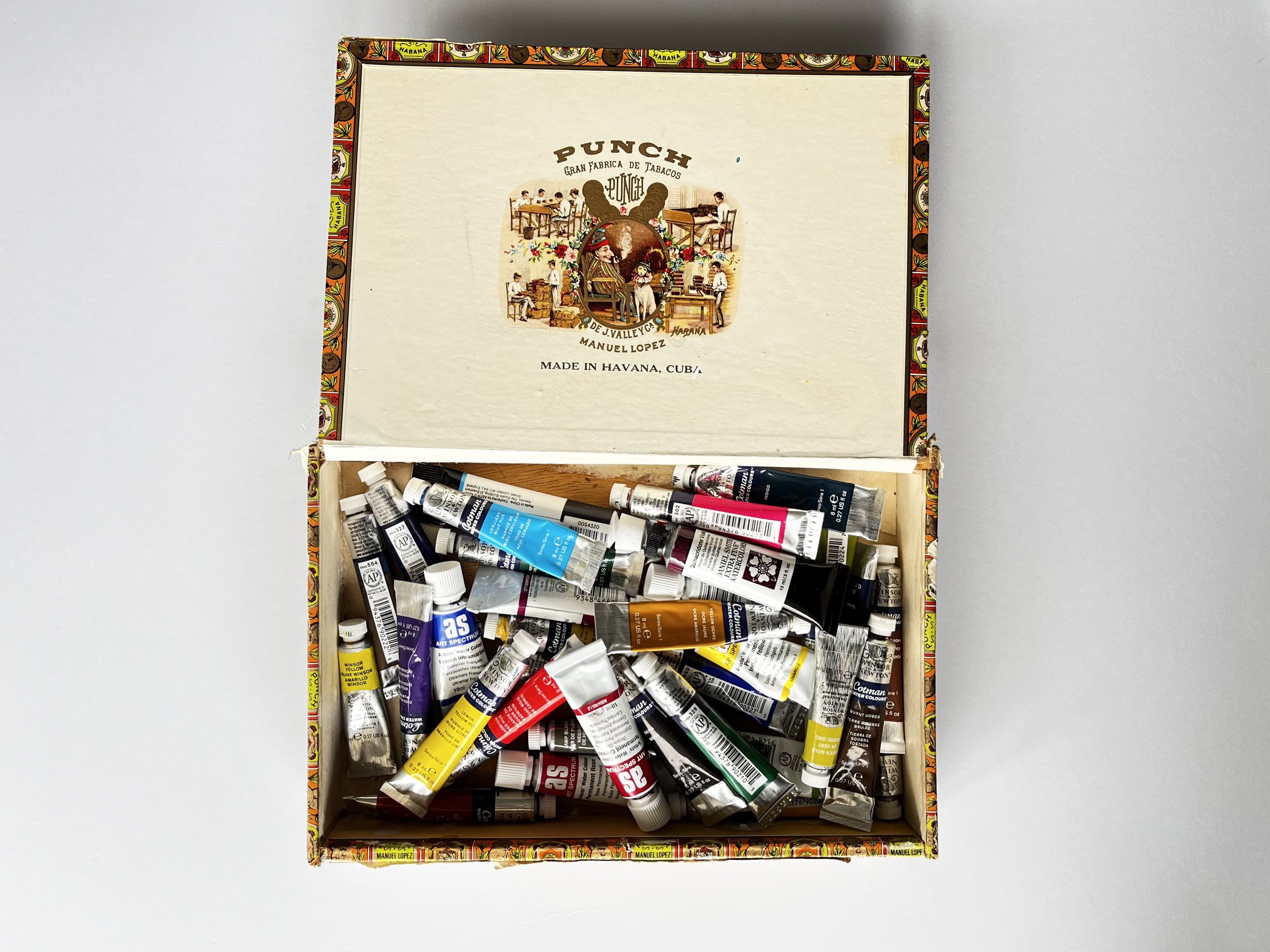Understanding watercolour pigment
Watercolour paint is very interesting in itself, in terms of how it behaves. In watercolor, opaqueness refers to the degree to which the pigment allows light to pass through it. Understanding watercolor opaqueness is important because it affects how you can use and manipulate the paint to achieve the desired effects in your artwork.
Watercolor pigments can range from transparent to opaque. Transparent pigments allow light to pass through, allowing the underlying layers of paint to show through, while opaque pigments block the light and cover the underlying layers.
Transparent pigments are useful for creating luminous and subtle washes of color, while opaque pigments are useful for creating more solid and dense areas of color. Transparent pigments require more care and control to achieve an even application.
Semi-transparent pigments are somewhere in between, allowing some light to pass through while still covering the underlying layers to some degree.
If you want to create a subtle, layered effect in your painting, using transparent pigments will allow the underlying layers to show through, creating a sense of depth and luminosity. On the other hand, if you want to create a more solid, dense area of color, using opaque pigments is necessary to achieve the desired effect.
I will talk in terms of the range I tend to use, which is mostly Winsor & Newton (although I also use Daniel Smith as well)
Transparent Colours
Winsor Lemon
Winsor Yellow
Winsor Blue (Red Shade)
Winsor Blue (Green Shade)
Winsor Green (Blue Shade)
Winsor Green (Yellow Shade)
Winsor Red
Permanent Alizarin Crimson
Quinacridone Magenta
Burnt Sienna
Burnt Umber
Raw Sienna
Raw Umber
Semi-transparent
Cobalt Blue
Cobalt Turquoise Light
Cobalt Violet
Permanent Rose
Opera Rose
Winsor Orange
Quinacridone Gold
Yellow Ochre
Indian Red
Naples Yellow
Cerulean Blue
French Ultramarine
Opaques
Chinese White
Zinc White
Titanium White
Cadmium Yellow Pale
Cadmium Yellow Deep
Cadmium Red
Cobalt Blue Deep
Ivory Black
These pigments have a high level of coverage and can be used to create dense areas of color without the underlying layers showing through.
